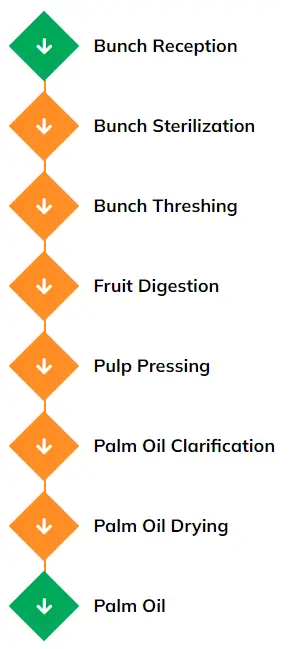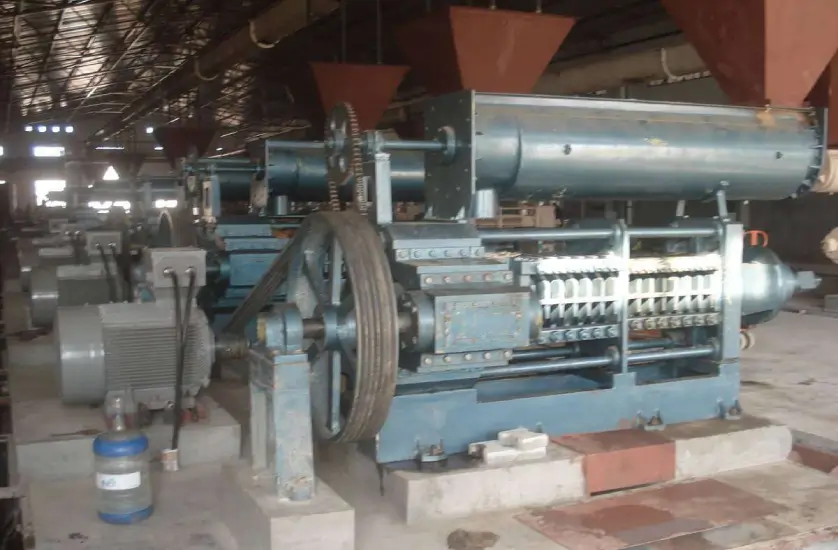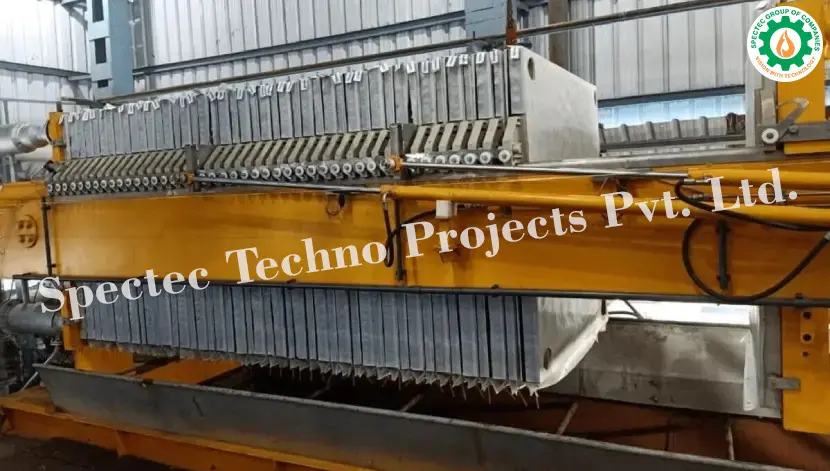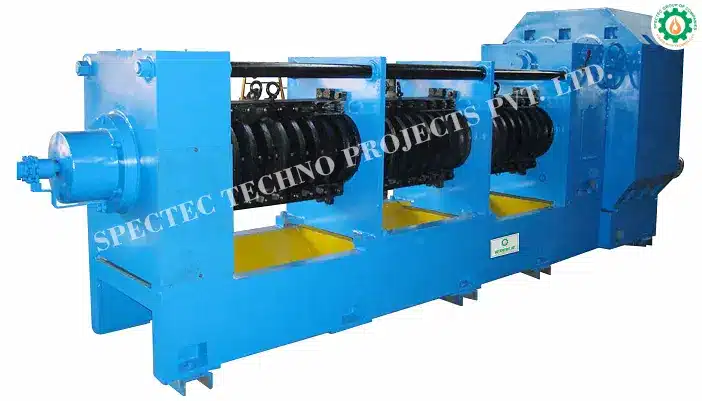- Home
- Crude Oil Processing
- Edible Crude Oil
- Fresh Fruit Branches
Projects we offer
Fresh Fruit Bunches Plant
Palm oil in bunch content of 25 percent. This is equivalent to a yield of 5 tones oil/hectare/year (excluding the palm kernel oil), which far outstrips any other source of edible oil.
Ideal Composition of Palm Fruit Bunch

-
Bunch Reception
-
Bunch Sterilization
-
Bunch Threshing
-
Fruit Digestion
-
Pulp Pressing
-
Palm Oil Clarification
-
Palm Oil Drying
-
Palm Oil
Process Description:
Bunch Reception
Fresh fruit arrives from the field as bunches or loose fruit. The fresh fruit is normally emptied into wooden boxes suitable for weighing on a scale so that quantities of fruit arriving at the processing site may be checked. Large installations use weighbridges to weigh materials in trucks.
The quality standard achieved is initially dependent on the quality of bunches arriving at the mill. The mill cannot improve upon this quality but can prevent or minimize further deterioration.
Bunch Sterilization
Sterilization or cooking means the use of high-temperature wet-heat treatment of loose fruit. Cooking normally uses hot water; sterilization uses pressurized steam. The cooking action serves several purposes.
Heat treatment destroys oil-splitting enzymes and arrests hydrolysis and autoxidation.
For sterilization, bunches are cooked whole, the wet heat weakens the fruit stem and makes it easy to remove the fruit from bunches on shaking or tumbling in the threshing machine.
Bunch Threshing: (Removal of fruits from the bunch)
The fresh fruit bunch consists of fruit embedded in spikelet’s growing on a main stem. In a mechanized system, a rotating drum or fixed drum equipped with rotary beater bars detach the fruit from the bunch, leaving the spikelet on the stem.
Fruit Digestion
Pulp Pressing
Digested fruit is continuously conveyed through the cage towards an outlet restricted by a cone, which creates the pressure to expel the oil through the cage perforations (drilled holes). Oil-bearing cells that are not ruptured in the digester will remain unopened if a hydraulic or centrifugal extraction system is employed. Screw presses, due to the turbulence and kneading action exerted on the fruit mass in the press cage, can effectively break open the unopened oil cells and release more oil. These presses act as an additional digester and are efficient in oil extraction.
Palm Oil Clarification
The diluted mixture is passed through a Vibro-screen to remove coarse fibre. The screened mixture is boiled from one or two hours and then allowed to settle by gravity in the large tank so that the palm oil, being lighter than water, will separate and rise to the top. The clear oil is decanted into a reception tank. This clarified oil still contains traces of water and dirt.
Palm Oil Drying
The Palm oil from decanter will be pumped to Continuous Vacuum drier, where moisture of Palm oil will be reduced under vacuum.






